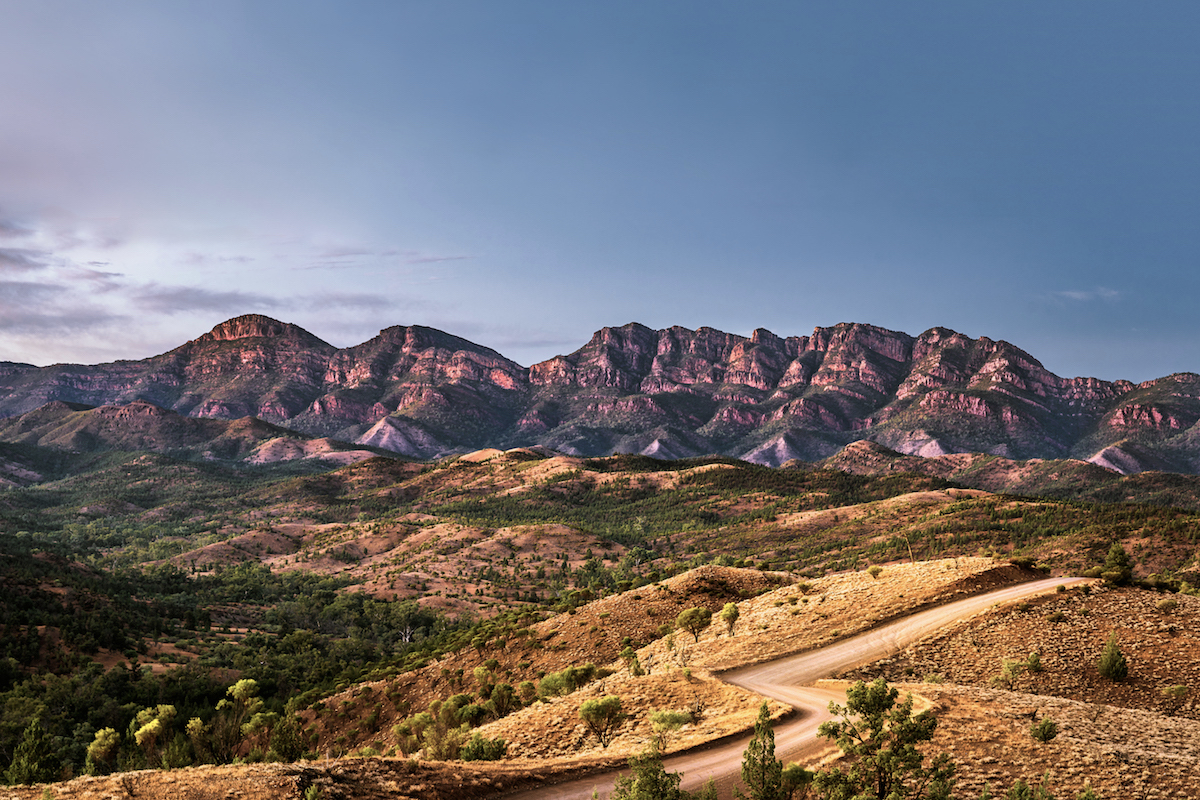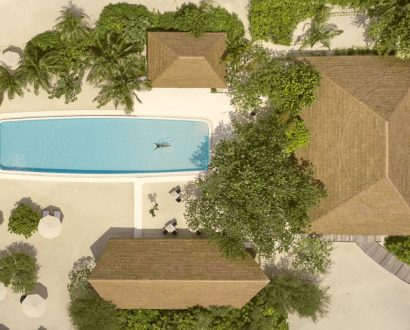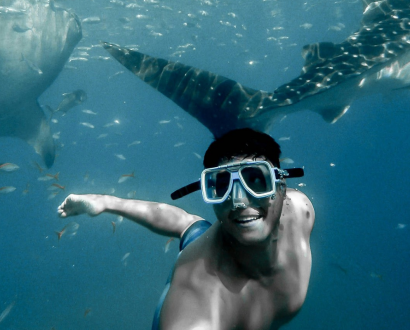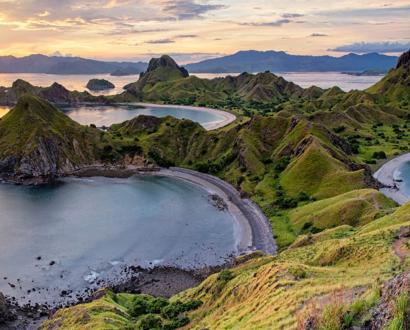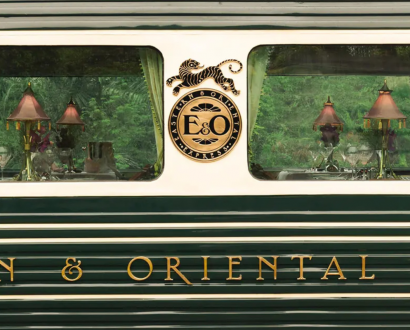About two hours north of Adelaide, South Australia, near the boundary of the Goyder’s Line, the landscape changes drastically, with the dusty green bush petering out on one side of the highway and red earth kissing the bright blue sky on the other.
It is a subtle progression that creeps upon us as we glide along the wide-open plains in the air-conditioned comfort of a Mercedes-Benz minibus on a Flinders Ranges Odyssey tour of the South Australian outback.
“We need to drop the speed from here on,” explains Peter Roberts, our instantly likeable, learned (think Google) local guide. “Dusk is coming and the wildlife will be out in force and we don’t want to hit anything.”
The chattering between the six of us settles down as we all become more alert to our natural surrounds, excitedly calling out to make sure no-one misses a mob of long-legged emus tearing past à la the Road Runner. It’s a sight that captivates us a couple of hours after leaving the City of Churches and doesn’t get old during the several days we travel around this magical region.
“We have to be very careful as they frequently…” Peter cuts off as the comical birds take a sharp 90-degree turn and charge across the road in front of us. “…do that!”
While our first accommodation is the gorgeous landscape-hued eco-villas at Rawnsley Park Station in the heart of the Ikara-Flinders Ranges National Park, some five hours’ drive north of Adelaide, we have some awe-inspiring diversions en route, taking our travel time to around eight hours.
The wealth of information Peter provides is extraordinary and so welcome – starting with the history and architecture of Adelaide, through the changing landscapes and arable farming rights, wildlife and more, as we head up-country towards Flinders Ranges. These are things you simply don’t learn if you travel on your own, even with the best guidebook to hand.
As we pull into the small mining township of Burra for a break, my heart skips a beat as I read the sign: ‘Twinned with St Just, Cornwall’. My hometown! I was destined to make this journey. The pretty town with its quiet, wide roads has a self-guided museum tour where you pay a deposit for a key that lets you into a dozen buildings and sites of historical interest, which you can explore at your leisure.
It’s kind of a one-horse town but that’s the case with so many settlements in the outback, and they each have unique quirks that give them appeal, as well as an intriguing, and frankly humbling, insight into how people exist in small-town Australia.
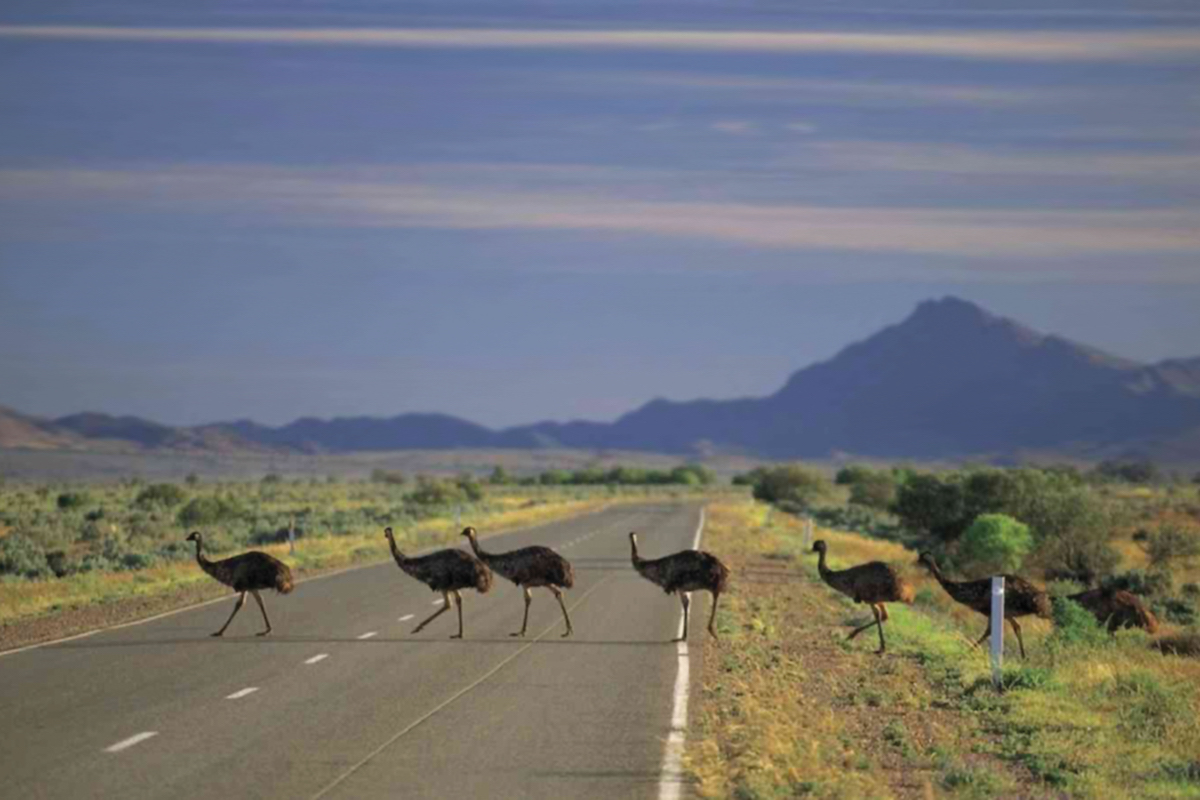
Diesel and dust
We pass close to Jamestown, the location of Elon Musk’s giant lithium battery that now supports the state’s energy needs; the iconic red ruin from Midnight Oil’s ‘Beds are Burning’ – where we make an unscheduled stop for some photo opportunities – and, of course, roos, emus, wedge-tailed eagles and more.
The hoped-for mammal on this trip, however, is the once-endangered, yellow-footed rock wallaby but we have to wait a few days to see if we can spot any in Parachilna Gorge.
At Orroroo we stop for lunch at the local pub and meet the landlord, Shane Hamilton, who’d never pulled a pint before moving from the Northern Territory to take over his wife’s family’s pub – “We just drank out of the tins in the Territory.”
Such is his inexperience that some visitors pop behind the bar to help themselves to glasses as he regales our group with ‘show and tell’. The vocal lorikeet he recently rescued struts along the bar to sit comfortably on his shoulder. It’s characters like this who enhance our trip.
We visit the red-dust ruins of Kanyaka Homestead north of Quorn which, along with our guide’s knowledge, gives us an insight into how hard it must have been for the pioneers to subsist here (and why the place is a ruin). The two professional photographers in our group are in their element, as are the rest of us iPhone snappers.
Next stop is the better-known Hawker where we’re all excited by the opportunity to meet artist Jeff Morgan at his eponymous gallery. His landscapes are renowned for being so extraordinarily detailed and realistic as to make you think you could simply walk into the paintings.
Morgan was a school dropout, dyslexia not helping his time there, but he showed mind-blowing artistic talent that he started to express in panoramas after a dark period in his life.
His Arkaroola painting is a staggering 45 metres long and 5.5 metres high, displayed in the round, and climbing stairs to a platform in the middle allows you to truly appreciate the scale of the creation, which cost thousands of dollars to create, not to mention many years.
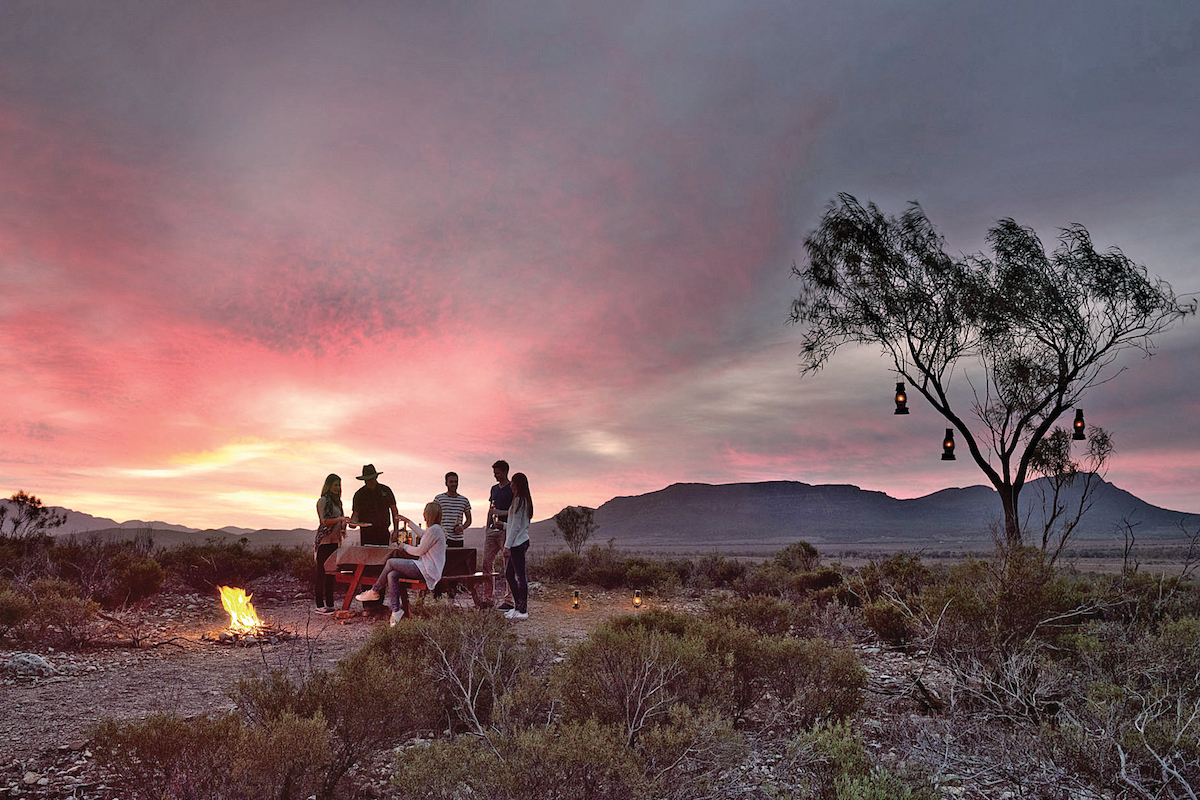
Rural luxury
The highlight of the tour, and the reason we have enjoyed meandering for a day to get here, is the outback environs of Rawnsley Park Station, run by engaging hosts Julie and Tony Smith – whose parents brought tourism to the sheep station 50 years ago.
Driving on to the 12,000-hectare property as the light is beginning to change means we have little time to take in our secluded, blush-coloured eco-villas as we get ready for a Sunset on the Chace tour, where our hosts collect us in jeeps and take us to a magnificent lookout where we stand in awe of the 360-degree view while enjoying bubbles and canapés.
Back at our villas, which blend tastefully into the red-earth landscape, it’s time to take stock of the spacious and comfortable lodgings. The accommodation on offer ranges from the one- and two-bedroom villas to camping under the stars, although the oversized skylight in the bedrooms allow for a little private stargazing in oh-so-comfortable surrounds.
It’s not hard to fall in love with my villa – there is nothing and no-one that overlooks my wraparound deck – and as I enjoy a glass of wine and some of the fresh produce that awaits me in the expansive kitchen, I idle away time thinking about how wonderful it would be to honeymoon here: the landscape is arresting; phone reception and wi-fi are patchy; the pool outlook is completely private with only roos and emu ambling in the foreground of the bluff; the food is terrific local Australian fare in the Woolshed Restaurant with the Station’s own lamb starring in a succession of leading roles.
Open 364 days a year (not Christmas Day), the Woolshed regularly hosts local bands and singers and food-and-wine evenings with the likes of Matt Lawson from Clare Valley’s Kirrihill Wines, so there is always something to do should you wish to join in.
The villas are a five-minute drive from the restaurant (your hosts will collect you, if you so desire) or a 15-minute walk along a quiet track where you may encounter more of the local wildlife.
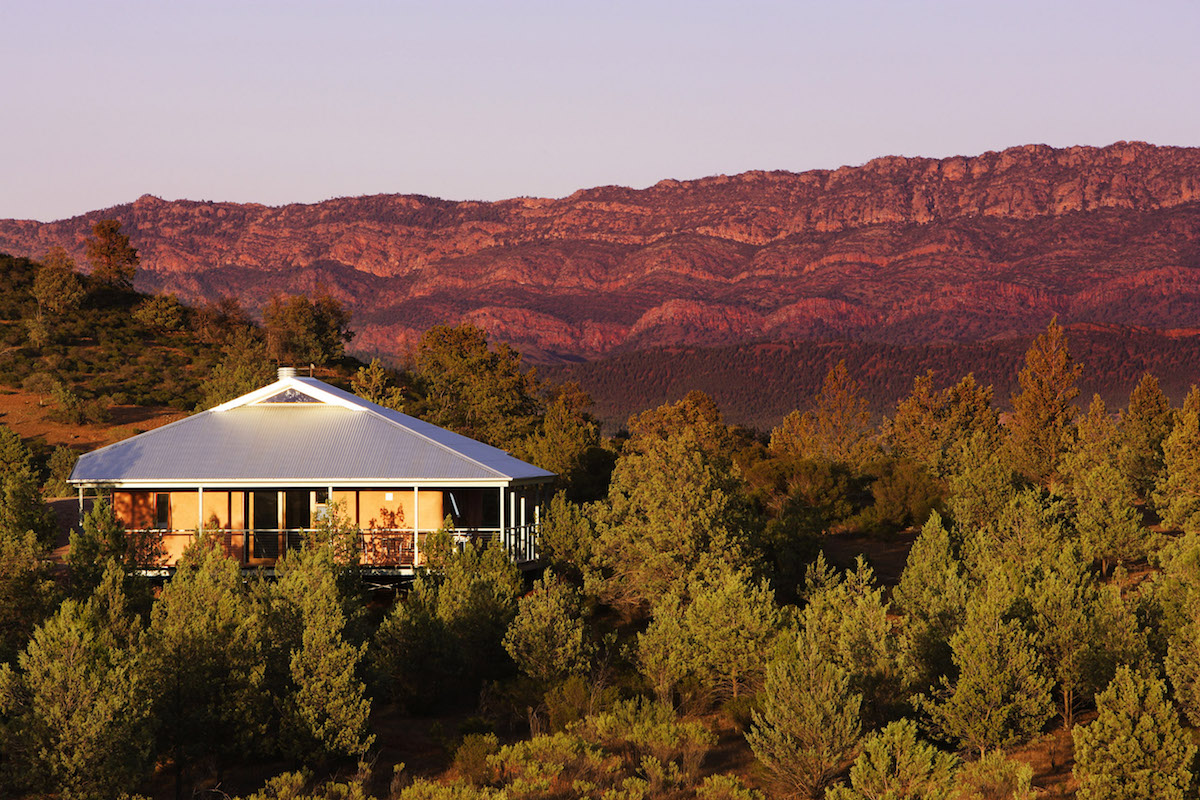
Exploring the Ranges
During our two days there we manage to explore the splendid gorges of the southern Flinders Ranges, including a jaw-dropping scenic flight over Wilpena Pound with Felicity Brown, one of only five female chief pilots in Australia.
The old mining town of Blinman is like nowhere I have been before. It has just 22 residents, a kids’ playground (although no children live there), a mining museum, a couple of cafes and a ramshackle old house where owner and restorer Greg happily shows off the original walls, kitchen, furniture and photographs.
What leads people to remain in, or move to, this little township? We stop to chat with a resident who moved to the town after she and her husband retired from their high-pressure city careers and decided to slow their lives down. Part of that change led them to plan to walk the Heysen Trail, a 1,200-kilometre hiking track that runs from Parachilna Gorge via the Adelaide Hills to Cape Jervis on the Fleurieu Peninsula.
Tragically, her husband died of a heart attack just a short way into the walk and she chose to relocate herself to the area where he died, which is Blinman.
There’s a lot to think about in this outback region of South Australia, but focus shifts again as we travel to Brachina Gorge to learn about the geology of the area and keep our eyes peeled for more wildlife. The fact that Peter, our guide, is beside himself when we spot not one but two yellow-footed rock wallabies on this sojourn indicates just how fortunate we are.
The species came close to extinction due to ecological pressures, including climate change and invasive species impacting their habitat, but the Bounceback program has been gradually, and successfully, reintroducing them to the Flinders since the 1990s.
Leaving Rawnsley Park Station we start our journey to iconic Prairie Hotel, Parachilna, renowned for its ‘feral platter’, which includes camel prosciutto and emu pâté – it’s beautifully presented and tastes amazing. The lodgings are quiet and comfortable with a good-quality gift shop packed with Australian handiworks, and the welcoming communal areas cry out to have you socialise with fellow travellers.
It’s the perfect jumping-off point for a visit to one of Sir David Attenborough’s favourite places in Australia, the Ediacara fossil site at Nilpena Station. Attenborough has visited twice and both times been hosted by Professor Jim Gehling, as were we on our trip.
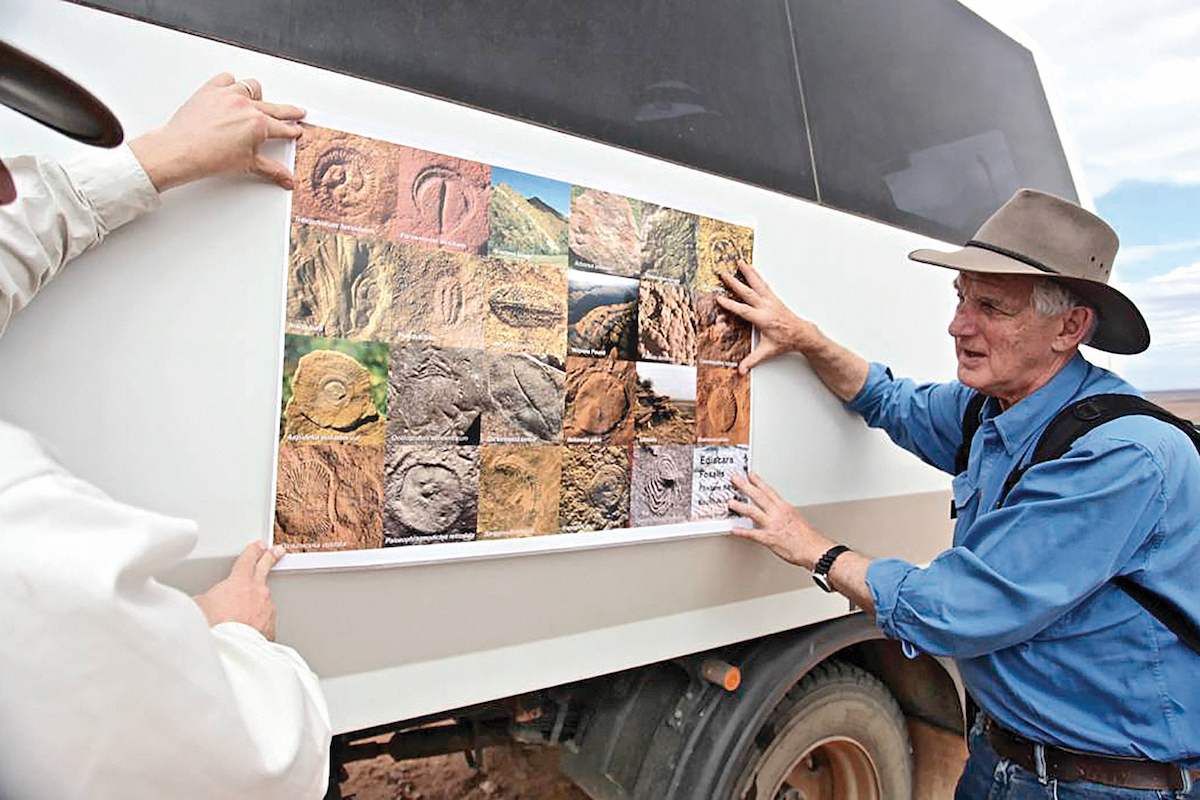
Profossil Jim (as ‘some’ of us choose to call him) accompanies us to the remote Nilpena Station (Rabbit-Proof Fence) and introduces us to layers of fossils that even he can’t fully explain – soft-bodied marine organisms, about 570 MILLION years old. Fragments of Ediacaran life have been located in China and Namibia. How is this even possible? The Prof can’t say why as no-one has worked it out.
Yet. This man has an enormous brain and even the brightest in our group struggle to grasp the scale of what he tells us. It is a huge privilege to be in his presence – he discovered many of the fossils here (naming some for family members) yet, when a glint of something catches his eye, he drops to his knees – in sand so bright red it hurts the eyes – like a small child. What it would be to have a passion like his.
Rain stops play and we help cover up the fossil site with a tarpaulin to not only protect it from the rain but also to stop the local roos disturbing the scene (the plus is that they get to drink the rainwater that’s collected on top of the covers).
Feeling extremely insignificant, we return to Prairie Hotel for the night before moseying back to Adelaide via the Quandong Cafe in Quorn, the Pichi Richi Railway museum and the prettily named Laura, before stopping at the Bush DeVine Cafe in Clare Valley for a beautiful local-produce lunch with Paulett Wines. A gentle reintroduction to civilisation after an extremely remote, extraordinary and precious adventure.
The 4-Day Flinders Ranges Outback Tour departs from Adelaide and travel in luxury air-conditioned Mercedes Benz vehicles, and includes two nights at the award-winning Rawnsley Park Station and one night at the famous Prairie Hotel. From A$3,184 per person. Find out more here.

